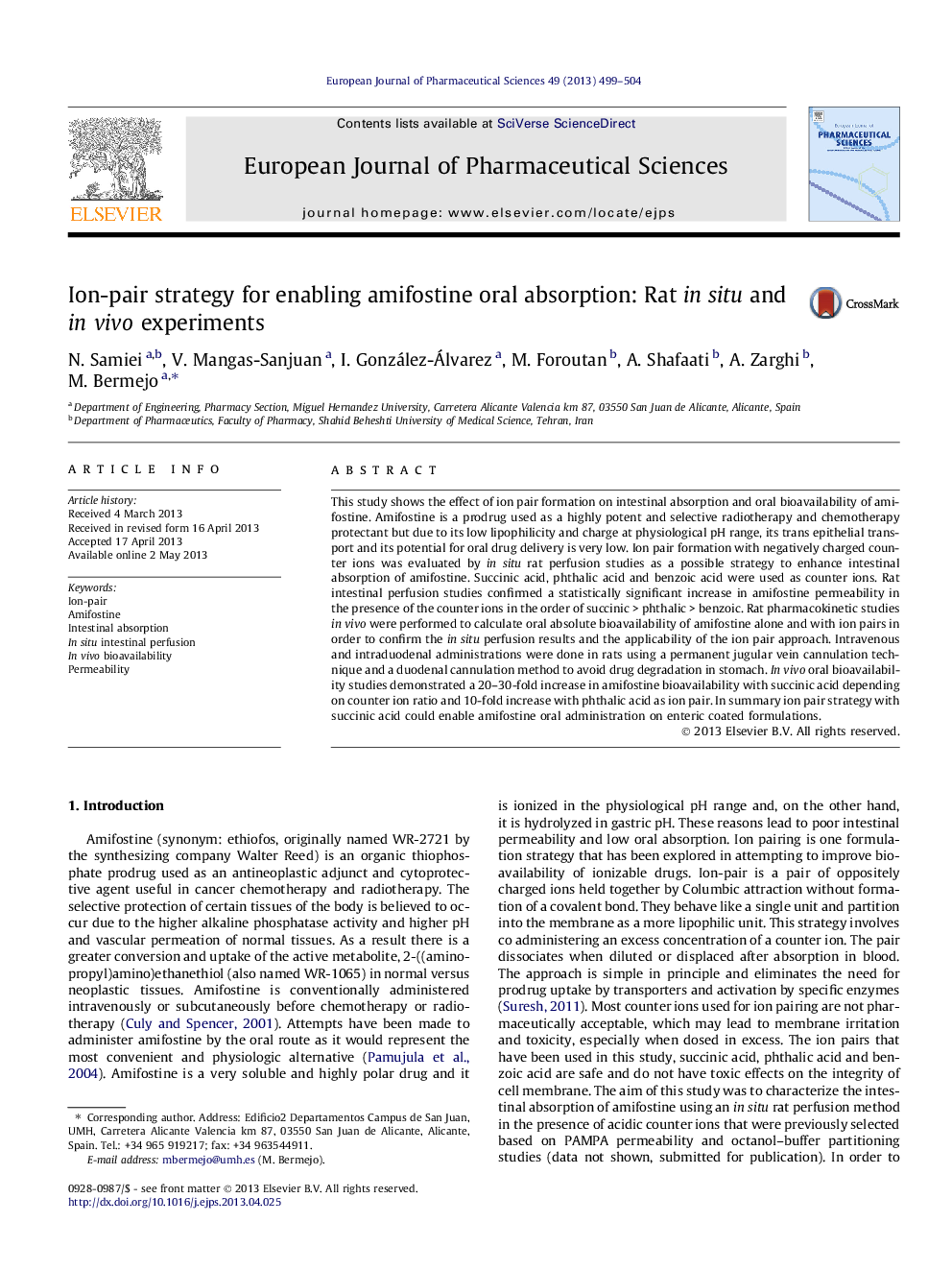| Article ID | Journal | Published Year | Pages | File Type |
|---|---|---|---|---|
| 2480842 | European Journal of Pharmaceutical Sciences | 2013 | 6 Pages |
This study shows the effect of ion pair formation on intestinal absorption and oral bioavailability of amifostine. Amifostine is a prodrug used as a highly potent and selective radiotherapy and chemotherapy protectant but due to its low lipophilicity and charge at physiological pH range, its trans epithelial transport and its potential for oral drug delivery is very low. Ion pair formation with negatively charged counter ions was evaluated by in situ rat perfusion studies as a possible strategy to enhance intestinal absorption of amifostine. Succinic acid, phthalic acid and benzoic acid were used as counter ions. Rat intestinal perfusion studies confirmed a statistically significant increase in amifostine permeability in the presence of the counter ions in the order of succinic > phthalic > benzoic. Rat pharmacokinetic studies in vivo were performed to calculate oral absolute bioavailability of amifostine alone and with ion pairs in order to confirm the in situ perfusion results and the applicability of the ion pair approach. Intravenous and intraduodenal administrations were done in rats using a permanent jugular vein cannulation technique and a duodenal cannulation method to avoid drug degradation in stomach. In vivo oral bioavailability studies demonstrated a 20–30-fold increase in amifostine bioavailability with succinic acid depending on counter ion ratio and 10-fold increase with phthalic acid as ion pair. In summary ion pair strategy with succinic acid could enable amifostine oral administration on enteric coated formulations.
Graphical abstractFigure optionsDownload full-size imageDownload high-quality image (105 K)Download as PowerPoint slide
